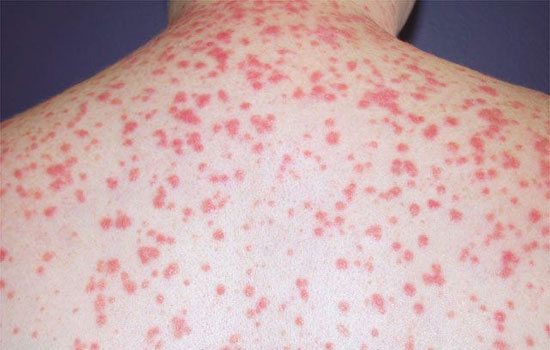
28 Jun 4 Top Treatments for Psoriasis and Eczma and How to Decide Which is Best
If you’re one of the millions of people suffering from psoriasis or eczema, you know that these conditions can be both painful and embarrassing. These conditions can cause a great deal of discomfort and affect your quality of life. But there is hope! Fortunately, there are a number of effective treatments available for both conditions.
While they are completely separate conditions, the treatments for psoriasis and eczema often overlap, and both conditions can be treated and managed to control pain and itching and minimise flare-ups. Treatments will usually depend on the severity of symptoms and patients’ individual needs and preferences.
In this article, we’ll take a look at the top three top treatments for psoriasis and eczema that can help improve your symptoms and give you your life back. We’ll also explore some of the advantages and disadvantages of each treatment so you can decide which one is best for you.
UVB Light Therapy
UVB light therapy is a safe and effective treatment that involves exposing the skin to UVB rays. This can be done either by using a UVB lamp or by spending time in a UVB booth or bed. It can help improve the symptoms of psoriasis and eczema by reducing inflammation and scaling, and can also help to slow the growth of skin cells by affecting the functioning of the DNA. Treatment sessions typically last for a few minutes each day and are usually repeated three to five times a week.
Studies show that an estimated 75% of people using UVB light therapy will develop clear skin which will typically last for at least 6 months.
Advantages:
- Safe and effective – few side effects
- Treatments can be done at home by hiring a UVB bed
- Home-based treatment can target flare-ups quickly
Disadvantages:
- Can be time-consuming – requiring multiple sessions per week
- May not be suitable for people with certain medical conditions
- Hospital-based treatments may have long waiting lists
Topical Corticosteroids
Topical corticosteroids are another treatment option that can be very effective in reducing the symptoms of psoriasis and eczema. Corticosteroids are anti-inflammatory drugs that come in the form of steroid creams or ointments and are commonly used to treat mild to moderate cases of psoriasis in most areas of the body. The treatment works by reducing inflammation. This slows the production of skin cells and reduces itching. Topical corticosteroids range in strength from mild to very strong and are usually safe for most people to use but should be used as directed by a doctor or pharmacist.
Advantages:
- Can be bought over the counter or on prescription
- Can be used to treat mild to moderate eczema and psoriasis
- Help to reduce symptoms quickly
Disadvantages:
- Can be messy and time-consuming to apply
- Can cause side effects such as skin thinning, bruising, and stretch marks if used for too long
- Cannot be used on children under two years old
- May make eczema worse if used too often
Systemic Treatments
Systemic treatments are drugs that are taken orally or by injection. They work throughout the entire body to help control the symptoms of psoriasis and eczema. Systemic treatments can be very effective but may have more serious side effects than other treatments. Injectable medications are usually only used in severe cases where patients have 10% to 30% of their bodies covered in plaques.
Advantages:
- Can be very effective in controlling the symptoms of psoriasis and eczema
Disadvantages:
- Can have serious side effects such as liver damage, high blood pressure, and an increased risk of infection
- May not be suitable for people with certain medical conditions
Wet Wraps
Wet wraps are a type of complementary treatment that can be used for both psoriasis and eczema. Wet wrapping is a 3-step process which involves applying moisturizer or steroid cream to affected areas of skin, before applying a wet bandage and then covering it with a layer of dry bandage. This helps to soothe the skin and reduce inflammation. Each treatment should last at least 2–3 hours, with a course of treatment usually lasting 3–5 days. Wet wraps are usually done in a hospital or clinic setting but can be done at home with the guidance of a doctor or nurse.
Advantages:
- Can be very effective in reducing the symptoms of eczema and psoriasis
- Helps to soothe the skin
Disadvantages:
- Can be time-consuming
- Can be messy to apply
- May not be suitable for people with certain medical conditions
How Do You Decide?
There’s no one-size-fits-all answer when it comes to choosing a treatment for psoriasis or eczema. The best approach is to work with a doctor or other healthcare professional to figure out what will work best for you. Be sure to let them know about any other medical conditions you have and any medications you are taking, as this can affect what treatment options are available to you. It’s also important to be patient – some treatments may take several weeks or even months to see results. And don’t forget that there are many other things you can do to manage your condition and improve your quality of life, such as using moisturizers regularly, avoiding triggers, and managing stress.
Conclusion
There’s currently no cure for eczema or psoriasis, therefore treatment and management – in whatever form – will often be lifelong. However, with the right treatment plan, it is possible to effectively manage both conditions and enjoy a good quality of life. If you’re struggling to control your skin condition, raise your concerns with your doctor or dermatologist and ask for their advice about alternative treatment options.
And, if you would like to learn more about how UVB light therapy can help you and bring relief from your symptoms, please get in touch. We’d be happy to chat with you about our home hire UVB units/beds and answer any questions you may have.

Sorry, the comment form is closed at this time.